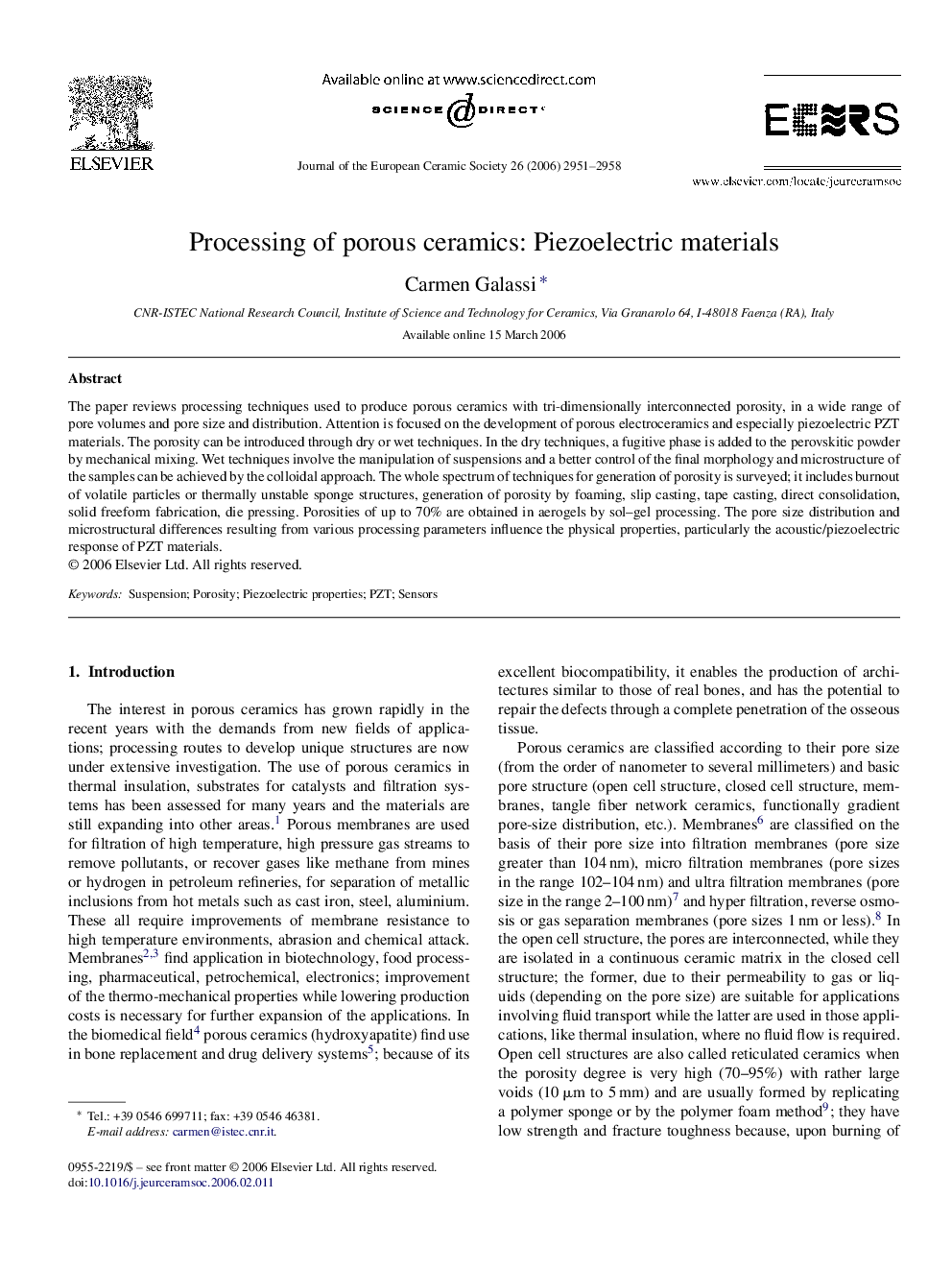| Article ID | Journal | Published Year | Pages | File Type |
|---|---|---|---|---|
| 1477477 | Journal of the European Ceramic Society | 2006 | 8 Pages |
The paper reviews processing techniques used to produce porous ceramics with tri-dimensionally interconnected porosity, in a wide range of pore volumes and pore size and distribution. Attention is focused on the development of porous electroceramics and especially piezoelectric PZT materials. The porosity can be introduced through dry or wet techniques. In the dry techniques, a fugitive phase is added to the perovskitic powder by mechanical mixing. Wet techniques involve the manipulation of suspensions and a better control of the final morphology and microstructure of the samples can be achieved by the colloidal approach. The whole spectrum of techniques for generation of porosity is surveyed; it includes burnout of volatile particles or thermally unstable sponge structures, generation of porosity by foaming, slip casting, tape casting, direct consolidation, solid freeform fabrication, die pressing. Porosities of up to 70% are obtained in aerogels by sol–gel processing. The pore size distribution and microstructural differences resulting from various processing parameters influence the physical properties, particularly the acoustic/piezoelectric response of PZT materials.
